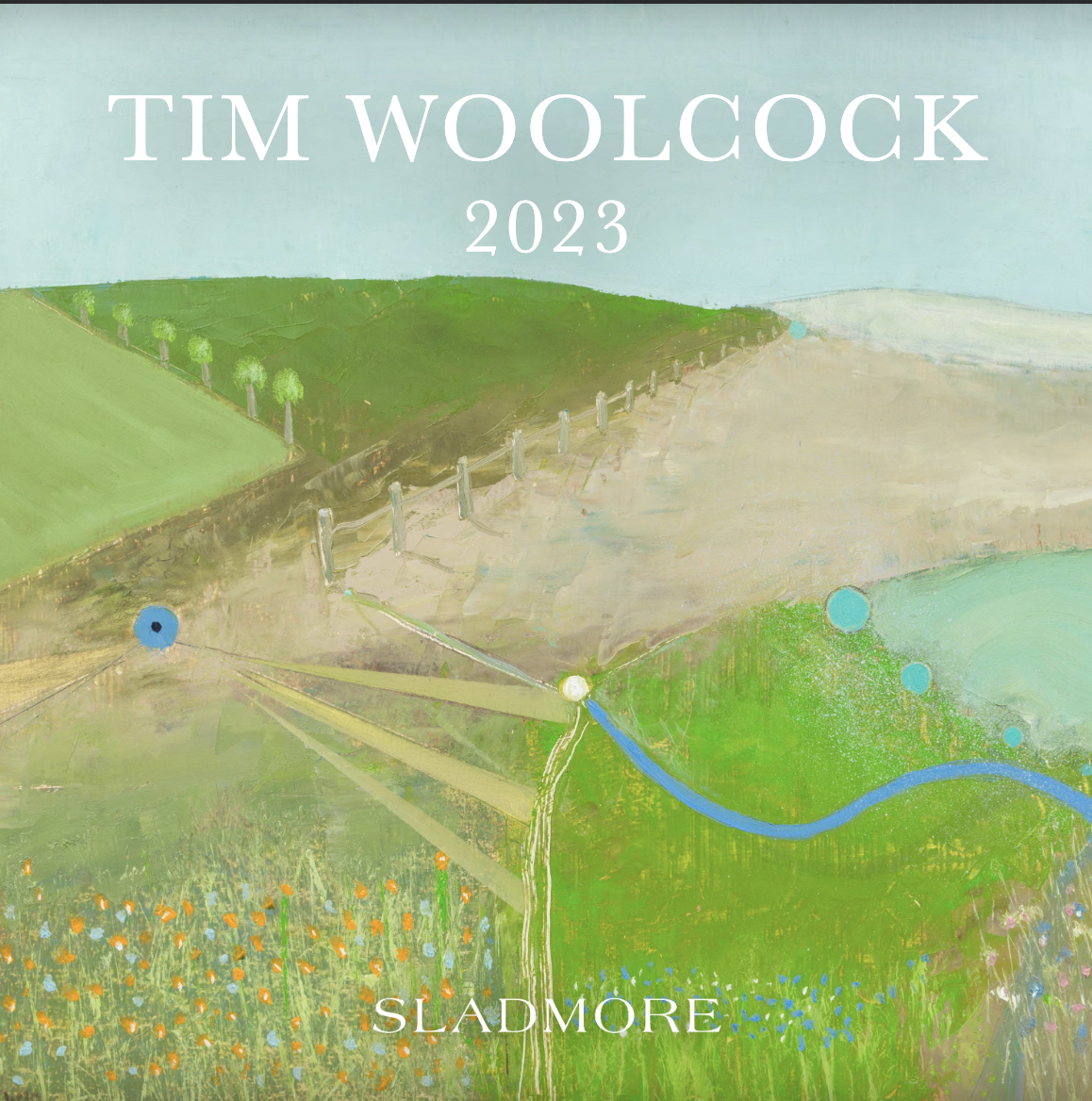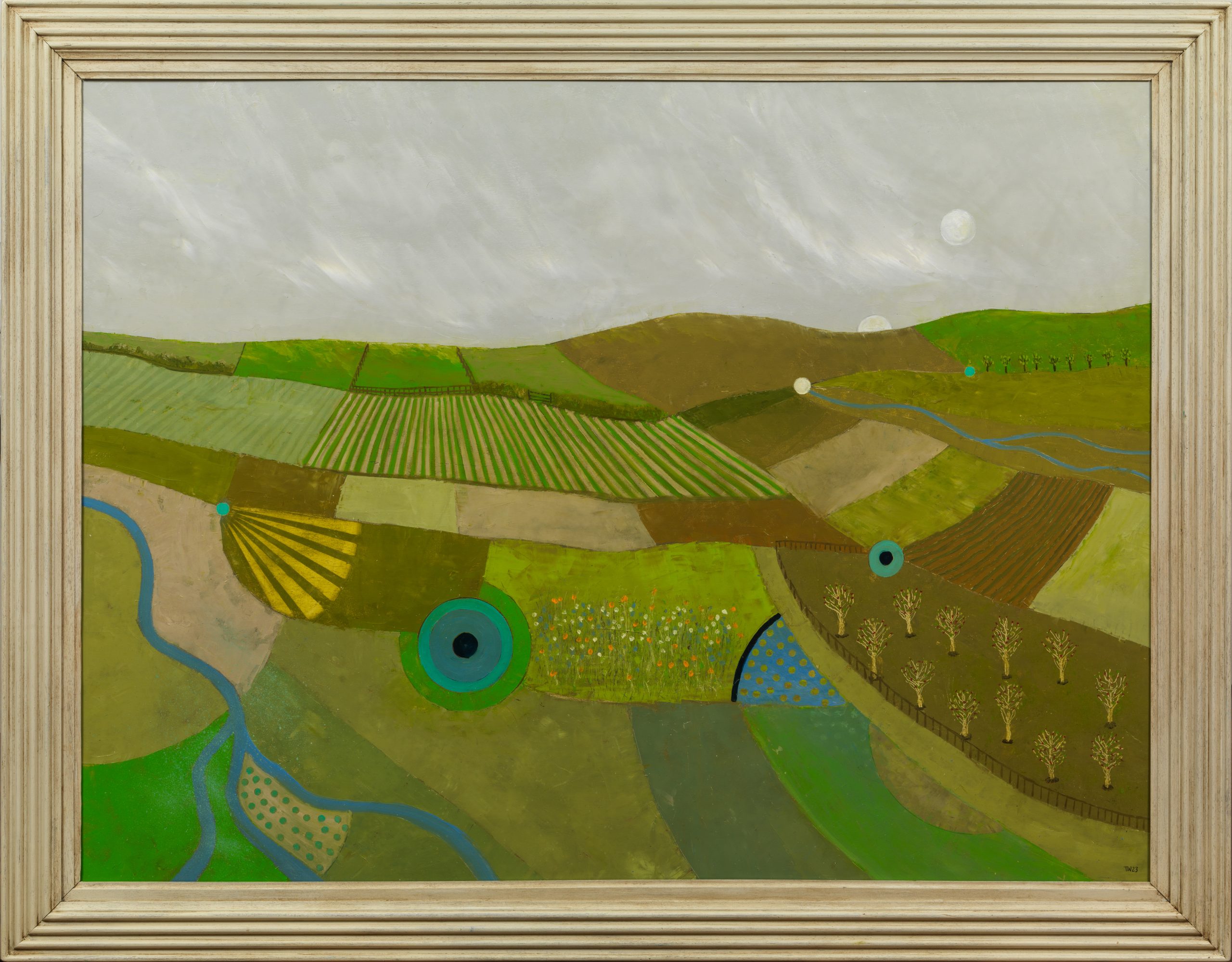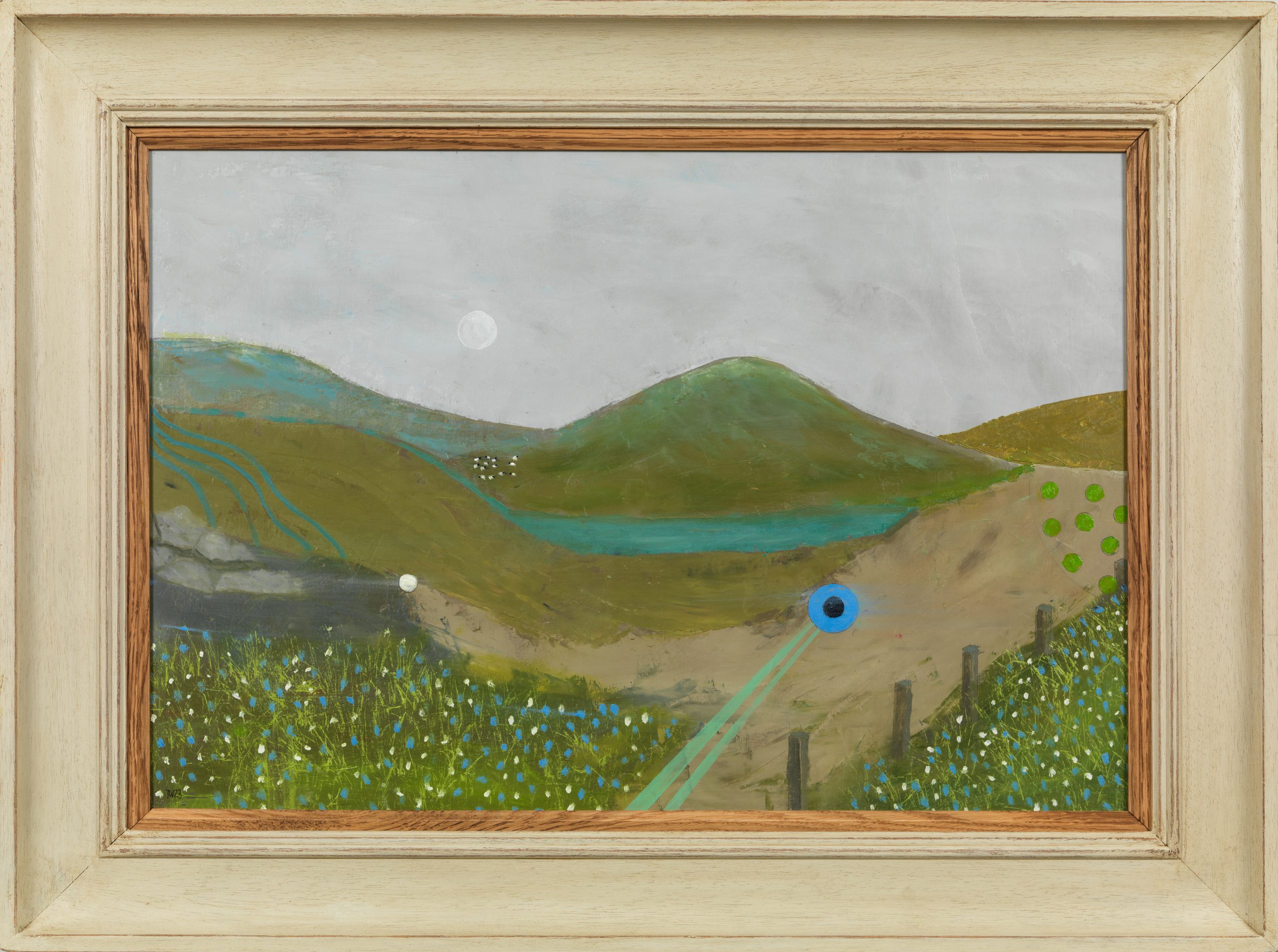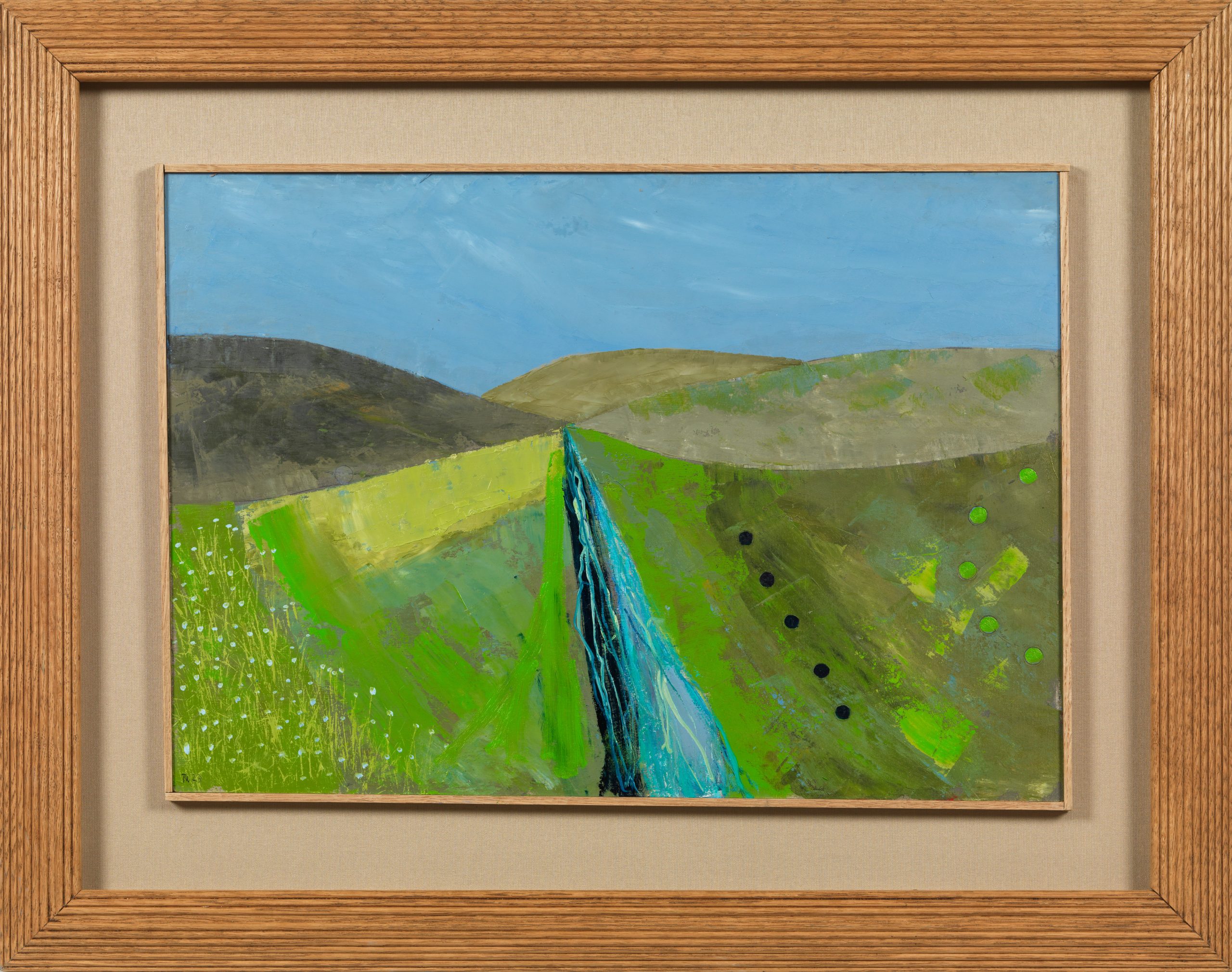Tim Woolcock, Recent Landscape Paintings
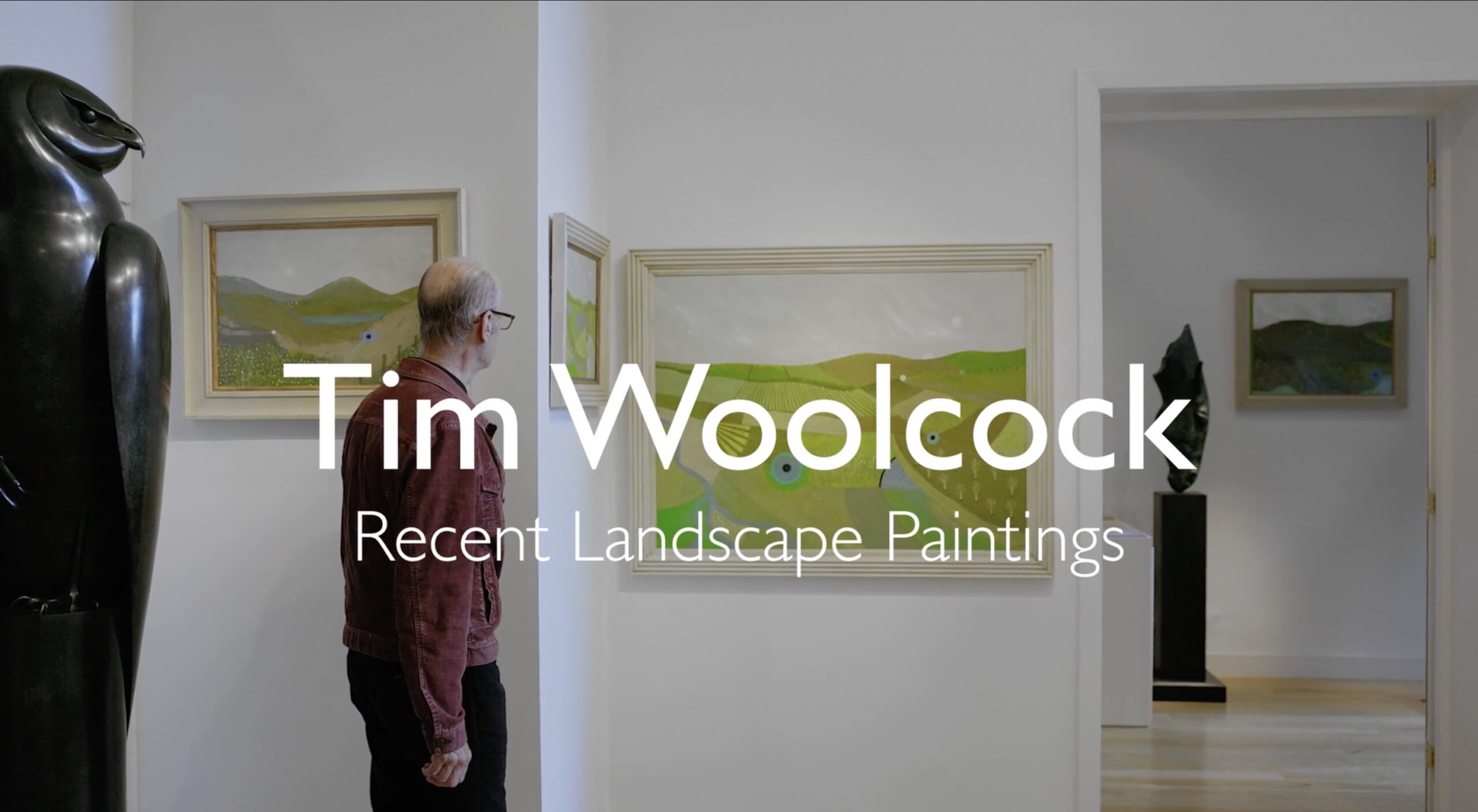
Exhibition Highlights
View all Artworks >We first saw Tim’s work in an exhibition fifteen years ago and were delighted to purchase one of his landscapes of the west country. We have been following his career with a keen interest since then and are delighted to be giving him a solo exhibition at the Sladmore. Whilst at first glance, a show of landscape paintings may seem somewhat of a departure for a predominantly sculpture gallery, our focus has always been on the natural world, undoubtedly captured by Tim in his own two-dimensional language.
Nona Horswell, September 2023
In conversation with Tim Woolcock
My landscape paintings follow in a lineage of English and Irish countryside painters; a long tradition stretching back even perhaps before Samuel Palmer and finishing up, at the moment, with the great illuminating works of David Hockney. I’ve always admired Paul Nash – the Second World War painter.
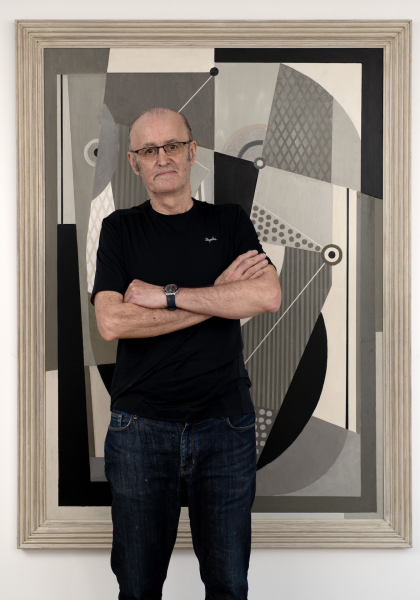 One of my main thoughts with painting is: if you are thinking you are not painting, and if you are painting you’re not thinking. In ‘Zen in the Art of Archery’ the 1948 book by Eugen Herrigel, there was a piece where he described the Archer shooting at the target. When he or she forgets themselves, they generally hit the mark but if there’s a self pre-occupation, they don’t hit the bullseye unfortunately.
One of my main thoughts with painting is: if you are thinking you are not painting, and if you are painting you’re not thinking. In ‘Zen in the Art of Archery’ the 1948 book by Eugen Herrigel, there was a piece where he described the Archer shooting at the target. When he or she forgets themselves, they generally hit the mark but if there’s a self pre-occupation, they don’t hit the bullseye unfortunately.
I started doing landscape paintings as an aside. I had a couple of abstract paintings on the go, and I had this huge studio, almost the size of an aircraft hangar when we were living in Ireland. The countryside was so beautiful – pure agricultural countryside – I took a shine to it straight away and I started painting the countryside of Kilkenny, County Carlow and what they called the ‘garden of Ireland’ County Wicklow and then I reverted to the English landscapes of Wiltshire and Dorset and Devon, where we used to cycle around these places.
The landscapes are generally an intuitive evocation of a place. I don’t do plein air painting. David Hockney only started doing plein air painting of Yorkshire when he was 70 I think. I’ve never gone out with my easel into the countryside. Some of them are landscapes of the mind. I do dream of landscape sometimes when I’m falling asleep.
You’ll notice the Irish landscapes, especially the ones in Connemara, have a different palette, a more intense green, and they lack the agricultural development that is present in the English landscapes. Places like Dorset, Wiltshire and Oxfordshire, if you go there in spring and summer, you can almost sit in a meadow and be transported back to the days of Samuel Palmer with shepherds and sheep.
People have asked what the small circles in my landscape paintings denote. There are many things we can’t see in the British landscape. I suppose the planetary influence on the earth is a lot to do with those symbols. With a fallen moon I can denote time passing in a painting which is very difficult to do. It’s honouring the cosmos: without the sun my heart wouldn’t beat, none of this would exist. This piece of paper in front of me wouldn’t exist because the tree wouldn’t exist, we wouldn’t have this beautiful English countryside. It’s fascinating. It’s down to interdependent co-origination. Also, there’s also almost an organic replication in the farming that we see in the landscapes. Man-made grooves and plough lines have become fascinating for me. It is as if man has directed his own art inadvertently onto the English landscape.
Tim Woolcock, 2023

